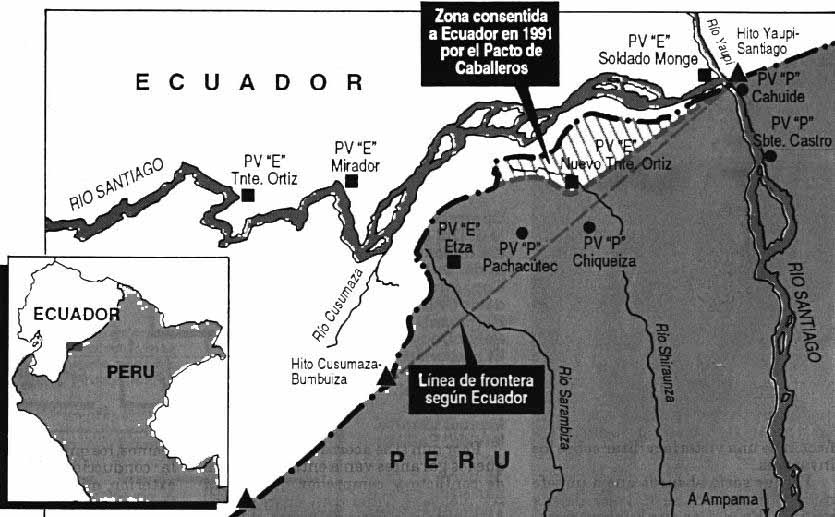
The Border between Ecuador and Peru has caused conflicts for many years. In 1941, the conflict came to fruition and Peru and Ecuador went to war. The war was fought across a thousand mile long border and was made up of mostly small scattered operations. When it was announced that the two countries were in conflict, Brazil, the United States and Argentina suggested attempts at a peaceful settlement rather that armed conflict, but they were unsuccessful and the Peruvian army continued to advance (Bowman, 757). The photo above shows the troop movement and areas of conflict (Ecuador and Peru, 1941).
Most of the conflict took place along the Zarumilla River which lies on the border between Ecuador and Peru and has been the main area of conflict for decades. The Ecuadorian army was very disorganized and ill prepared for the war. This conflict was short lived and a “Protocol of Peace, Friendship, and Boundaries between Ecuador and Peru” was signed on January 29,1942. The Protocol did not put a definite end to the situation but it did temporarily freeze it. The protocol provided military presence by Brazil, Argentina, Chile and the United States to help maintain the peace. The agreement also allowed Ecuador greater access to the Amazon and increased trade possibilities. The timing of the beginning and end of this conflict is important to remember. World War II was gearing up when this conflict started. According to Bowman, the war escalated the conflict between Ecuador and Peru but it was also partially the reason for the end of it (Bowman).
Nationalism was a time of development for countries in Latin America. Many criticized foreign investment instead wanting to control their own economies. The working classes also gained more recognition by leaders creating more reform in the work place. This was all catalyzed by the events at the time including the Great Depression and later World War II (Chasteen) . Because of this, it is unsurprising that conflict would erupt between countries regarding land. The area that Peru and Ecuador were fighting over was a long contested area with both countries claiming it so in a time of nationalist rising it makes sense that countries would attempt to take back or defend what they believed was rightfully theirs.
Works Cited:
Bowman, Isaiah. “The Ecuador-Peru Boundary Dispute.” Foreign Affairs 20, no. 4 (July 1942): 757–61. https://doi.org/10.2307/20029191.
Chasteen, John Charles. Born in Blood and Fire. 4rd edition. New York: W.W. Norton, 2016.
Msw. “ECUADOR AND PERU, 1941,” September 8, 2018. https://weaponsandwarfare.com/2018/09/14/ecuador-and-peru-1941/.
